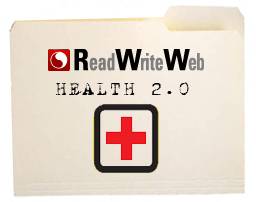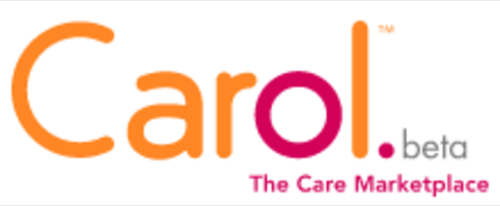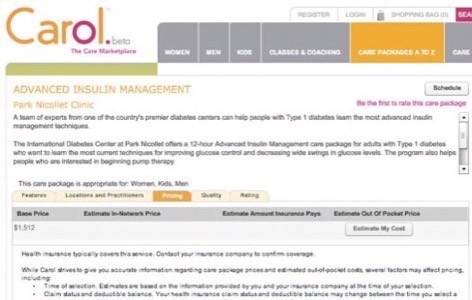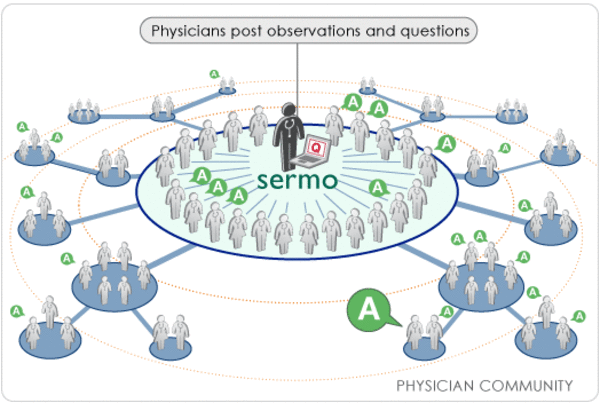Health 2.0, web-based apps and services for the healthcare sector, is a nascent but potentially huge market for web 2.0. As of now, many of these apps have an emphasis on communication, information sharing and community. These are relatively easy things to address using Web tools. However we’re starting to see health 2.0 apps try to tackle the enormous inefficiencies in the healthcare system – check out our description of Carol.com below. Also, in the longer term, we will see the Web being used in medical diagnosis and practice.

So what are the leading health 2.0 apps right now? The eDrugSearch blog has an informative interview with Matthew Holt and Indu Subaiya, two of the organizers of the upcoming Health 2.0 conference on March 3-4 in San Diego. In the interview, Holt and Subaiya discuss their current favorites.
Matthew Holt is a healthcare strategist and runs The Health Care Blog, while Indu is an MD and founder of healthcare consultancy Etude Scientific:

- Patients Like Me – an easy choice– the best example of a combination of really useful community and tools making a significant difference in the lives of people with serious debilitating diseases. You can literally drill down and see people in exactly your situation, on your drugs and see what did or did not work for them.
- Sermo — you can’t argue with success; more than 30,000 physicians signed up on this social network and they talk in detail to each other about a lot of clinical and nonclinical issues. But what’s less well-known is that their survey and ratings tools are among the most advanced anywhere on the Web. I wish my blogging software had them!
- DoublecheckMD — disclosure–I’m totally biased. I love this product so much I bullied the company into letting me become an advisor. It uses natural language recognition to allow consumers to search medical texts and match symptoms with the drugs they’re on. This is incredibly important considering so many medical “conditions” are in fact side-effects of drug interactions. But more than that, it shows the potential for extracting information from the millions and millions of pages of medical text out there and presenting it back in a useful format.
- Vitals.com – a new site with one of the nicest interfaces I’ve seen. It uses reported empirical data, patient reviews, and even uses an algorithm extracted from physician reviews of their peers, to create a one-stop shop for information about physicians. The whole field of provider ratings is set to explode, and these guys have done a nice one-stop shop. Also well worth mentioning Xoova.com, another physician directory site which has done a great job with creating online appointments.
- Carol.com– so new it only launched [last] week but this is a swing for the fences. It’s creating a market in which consumers with health plans can buy discreet bundles of medical services. I don’t know if this is the start of the revolution, or whether they’re the Chinese guy facing down the tank outside Tiananmen Square, but if there is to be a rational market-driven change to the healthcare system somebody will have to come up with tools like these.
Others mentioned by the pair:
- Organized Wisdom, “the Wikipedia of healthcare”.
- American Well, a “virtual visit” service.
- MyMedLab – “allows consumers to order and pay for many routine lab tests online and then just swing down to your local Quest or Labcorp site, get your blood drawn and get your results sent to you electronically.”
- Daily Strength – “wellness management”
Carol: Healthcare Marketplace
Of the above apps, Carol looks very interesting to us – as an app trying to solve inefficiencies in the current healthcare system. Carol describes itself as a “care marketplace” and it allows you to shop for “local clinics, doctors and medical care”. It aims to put consumers in control of which healthcare providers you see and how much you want to pay, by using “care packages” (basically, a set of goods and services bundled up for convenience). It also provides ratings, comparison tools and enables you to book online.

It is a beautifully designed site and I can see such a service becoming more widely used in the near future, as healthcare red tape slowly unravels. In the short term, as with most health 2.0 apps, it will struggle to fit into current health system processes and will probably mean extra work for consumers. But longer term, using the Internet to route around healthcare system inefficiencies is one of the best ‘use cases’ of web 2.0 we’ll ever get!

Sermo: Community for Physicians
Perhaps the leading health 2.0 startup currently is Sermo, a community for physicians to exchange information and collaborate. So far Sermo claims 50,000 physicians. Indu Subaiya, who is an MD, says that the business model could be as revolutionary as Google Adsense was: “it’s mind boggling in a way that Googles Adsense created a whole new set of dynamics. Id say Sermo is down that type of ground-breaking path.”


Conclusion: Progression to Changing the Healthcare System
As we mentioned in our post earlier this week, much of the current crop of health 2.0 apps are based on enhancing communucation, information sharing, and community; rather than tackling the bigger challenges like providing medical diagnosis over the Web. A good example is Google’s latest development announced today, a health records application. This is basically just an information storage service – albeit a handy one because patients will be able to access their records much easier.
But that is slowly changing. Carol and Sermo are pointers to new business models that are emerging in healthcare, using the Web. ZocDoc, which enables you to make doctor and dentist appointments online (currently limited to parts of New York), is another.
Online diagnosis will happen too, for example automated online CDSS (Clinical Decision Support Systems). In a ReadWriteWeb comment earlier this week, David Rothman pointed toFreeMD, which claims to be “an electronic doctor that conducts an interview, analyzes symptoms, and provides expert advice for free.” Falafulu Fisi has more analysis of these types of tools in another RWW comment.
What other health 2.0 apps do you have your eye on? We’re particularly interested in innovative, potentially ground-breaking web apps that will change how healthcare is done – if not now, then in the near future.
Note: if anyone in San Diego would like to cover the Health 2.0 Conference on March 3-4, for ReadWriteWeb, please email the editor.










